by Wendy O’Donovan Phillips
Share
![AdobeStock_155607448-[Converted]-4](https://www.bigbuzzinc.com/wp-content/uploads/2023/05/AdobeStock_155607448-Converted-4.jpg)
In our latest eBook, we explore how to:
- Uncover 3 trends in how your peers in senior living define social media marketing
- Access a simple 8-step social media marketing process for senior living
- Learn the most engaging types of social media posts in senior living
- Get photography best practices for social media in senior living
- Understand how your organization compares to investment and return benchmarking for social media marketing in senior living
Below is an excerpt covering the 8-step social media marketing process for senior living. Click here to download the full eBook.
Our study results paint a clear picture of processes your peers use to manage social media marketing. Here are the highlights.
How often should a senior living organization post on social media?
In her article How Often to Publish on Social Media for Business?, Senior Social Product Manager for HubSpot Daria Marmer wrote, “Adam Mosseri, head of Instagram, offered more insight during Instagram’s 2021 Creator Weekend. He suggests sharing a couple of in-feed posts per week and a couple of stories per day. Hootsuite suggests posting on Instagram three to seven times per week. And remember: Don’t post more than once per day.” The benchmark for social posting in the senior living industry is four to seven times weekly and only once daily, adjusting up and down depending upon business objectives and any gaps in reaching key measures of success. For example, for an organization that has high census across all locations, maintaining that status can take just four posts per week with one of those posts being promotional. For an organization seeking to boost census in one or more communities, it would be best to post seven times weekly with two of those posts being promotional.
How often do your peers post on social media?
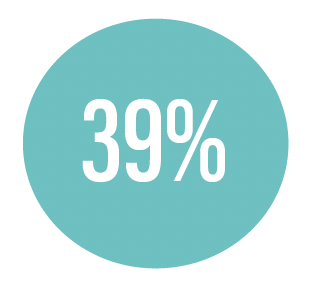
Said more than once per day.
If you are among them, consider ratcheting back to prevent unfollows and/or disengagement.
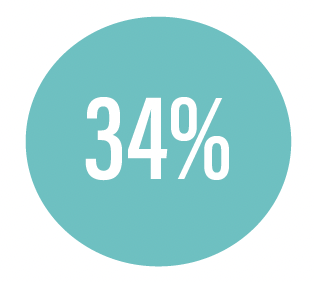
Said 2-4 times per week.
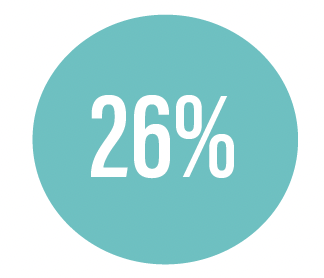
Said once daily.
What is a Good Process for Social Media Marketing in Senior Living?
Be sure to put the right people in charge of your organization’s social media marketing. Our study revealed that 50% of senior living marketers and executives have multiple members of the marketing team responsible for posting on their social media accounts. This can work well if everyone is in lockstep on one process for doing so.
What is a simple 8-step approach to the social media marketing process?
Here is the process Big Buzz has tested and proven over 15 years of delivering social media marketing in the care industries:
Step 1:
Of all our survey respondents, 49% said they set goals pertaining to social media. A good tool for doing so is the Content Path shown below. Over time, all posts should follow a path that aligns with various points in the conversion process as well as high-level business objectives the organization seeks to reach. This path makes clear what types of posts should appear day by day as well as each post types’ call to action and measure. Social posting without a Content Path is just more noise on the web. This path should also be used in planning for content marketing each month or quarter.
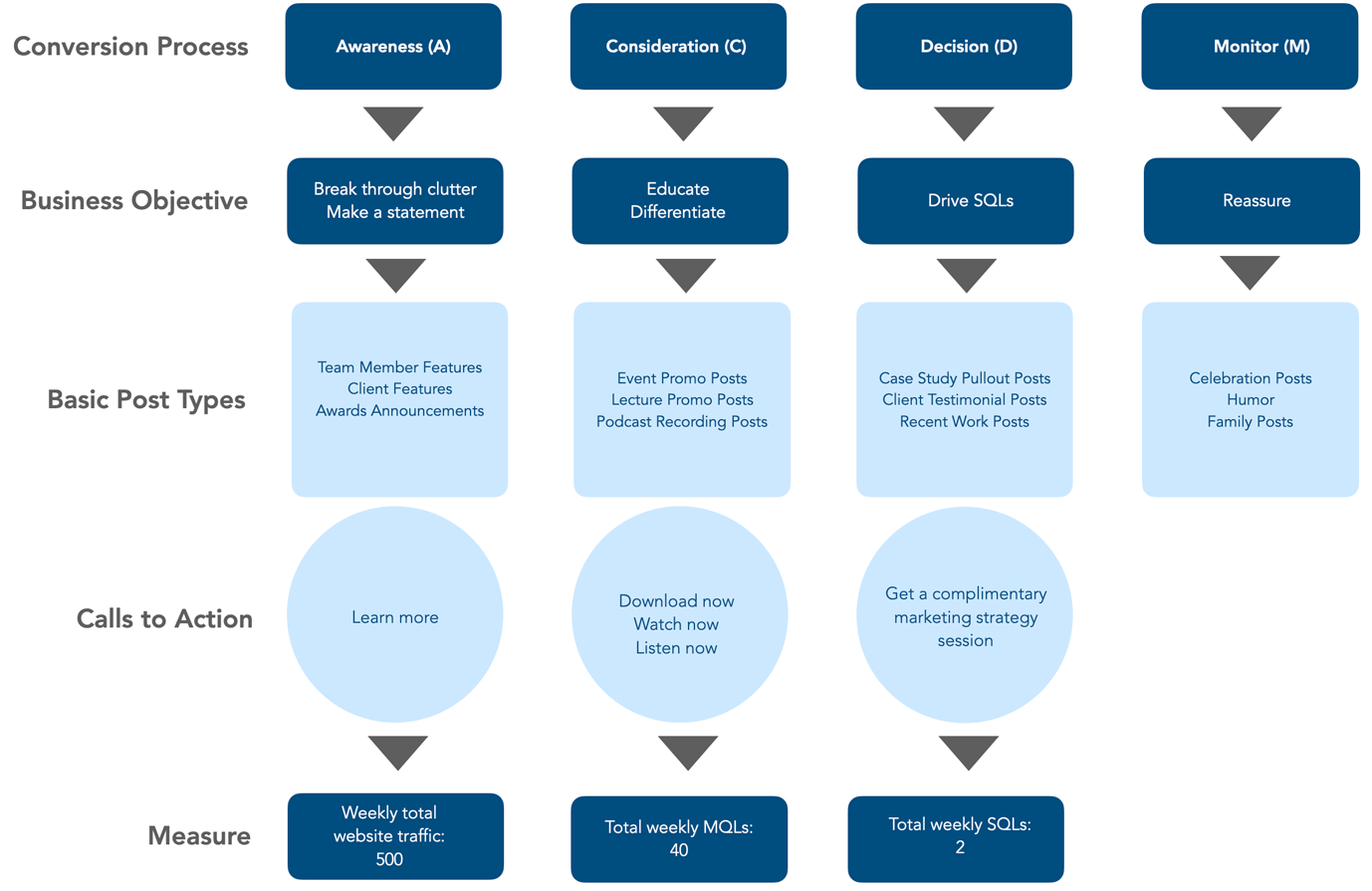
Step 2:
Complete research. Gather survey data and review past social media initiatives and analytics to determine what actions increase followership and engagements and which do not. In our study, 75% of respondents take this step.
Step 3:
Review brand standards. When asked, “How often does your organization consult a brand standards guide when creating social media posts?” 54% of our respondents said monthly and 41% said quarterly. Both are a good cadence for refreshing the mind on the organization’s brand pillars when planning social posts. It is entirely appropriate to integrate brand messaging into posts in the Awareness area of the Conversion Process in the Content Path, ensuring that it truly differentiates your organization.
Step 4:
Create the social media calendar. Most our survey respondents said they develop a new calendar either quarterly or monthly. We recommend quarterly development for organizations posting about four times weekly and monthly development for those posting up to seven times weekly. Here is a template for a quarterly social media calendar. When posts are calendared based upon business objective (Awareness, Consideration, Decision or Monitor) and brand positioning, differentiators and value proposition, all pillars of the organization can be addressed in regular posting. Social media calendaring is a great action on which multiple team members can collaborate. In fact, 66% of your peers said they ideate and align as a team on the overall social media marketing strategy.
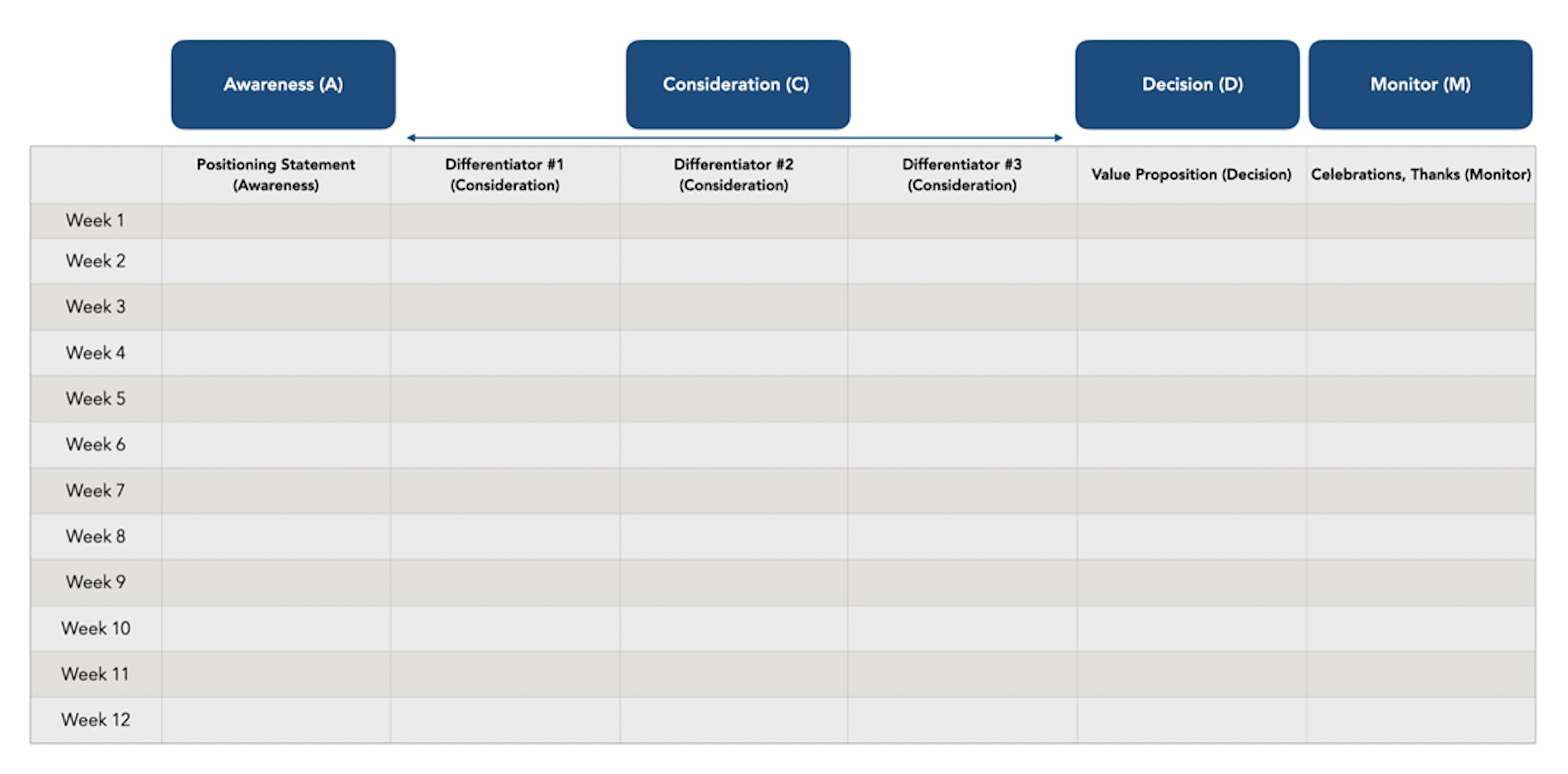
Step 5:
Create the social media posts. For each post, ensure the creation team includes an image or video with alt text to describe visuals for people who have trouble seeing them. Be sure every post includes attention-getting or educational text. Include relevant hashtags every time. In our research, we found only 51% of your peers include calls to action (CTAs) on all social posts. Recalling that people take action only when we call them to action, it’s imperative every post include a CTA and link.
Step 6:
Distribute posts across intended channels. Are you posting adequately on the right social media outlets? Only a strategic marketing plan specific to your organization’s enterprise goals and business objectives can answer that question. To prevent posting across too many channels, expending resources and leaking returns, be sure in Step 1 to have researched which social media outlets your target audience frequents most and focus time and budget there.
Step 7:
Analyze social media marketing results for a given period. While only 49% of survey respondents included data analysis in the social media process, it’s a critical indicator of success or areas in need of improvement. There are a dozen or more data points that social media marketers will measure, but your team likely will gain a clear high-level picture by measuring and reporting on just four metrics month over month:
Reach
How many followers?
Engagement Rate
How many reactions, comments and shares as a percentage of your audience?
Click-through Rate
(CTR)
How often did social followers click a link to consume more content from your organization?
Conversion Rate
How often did social content lead to a conversion like a download, form submission or call?
